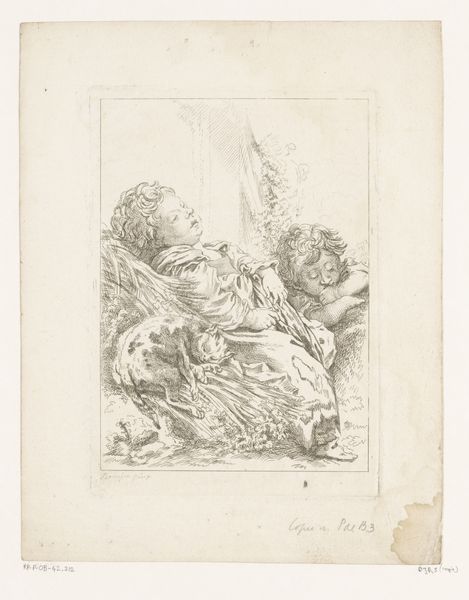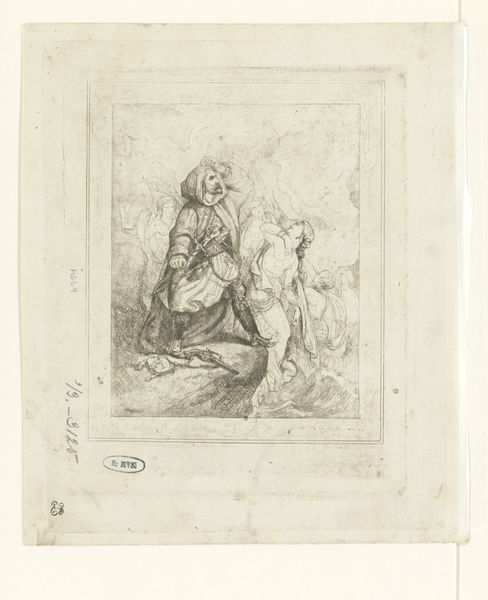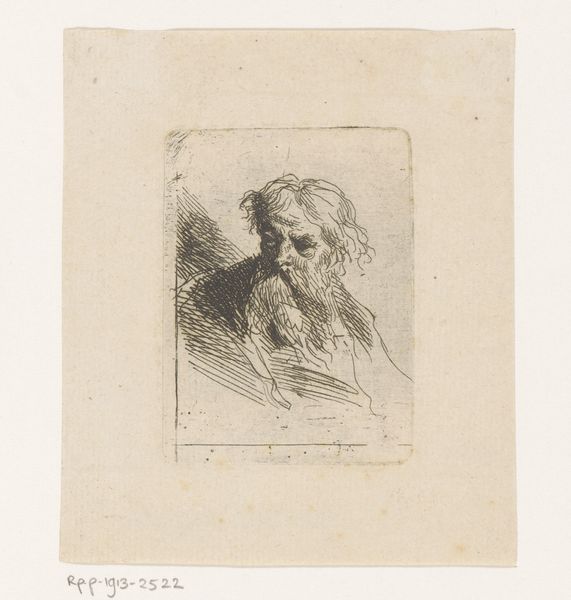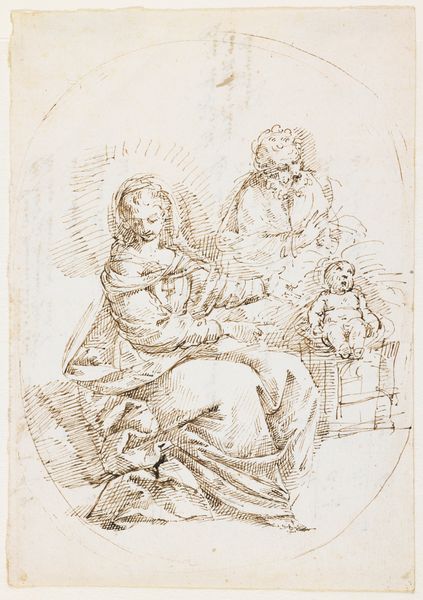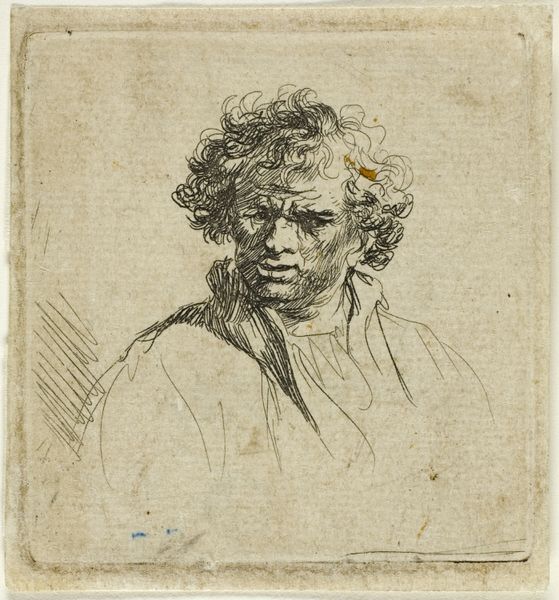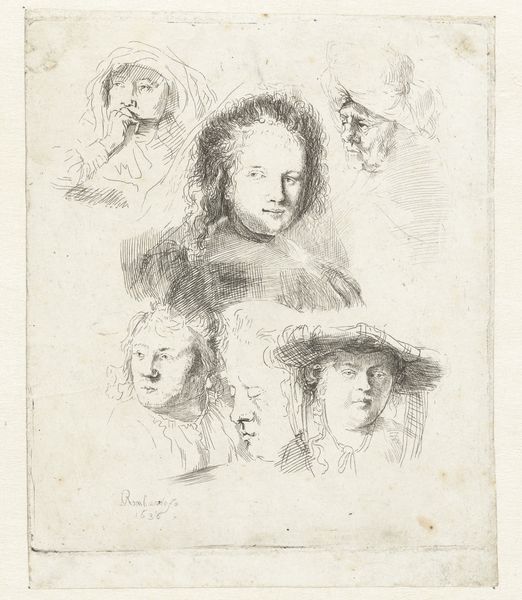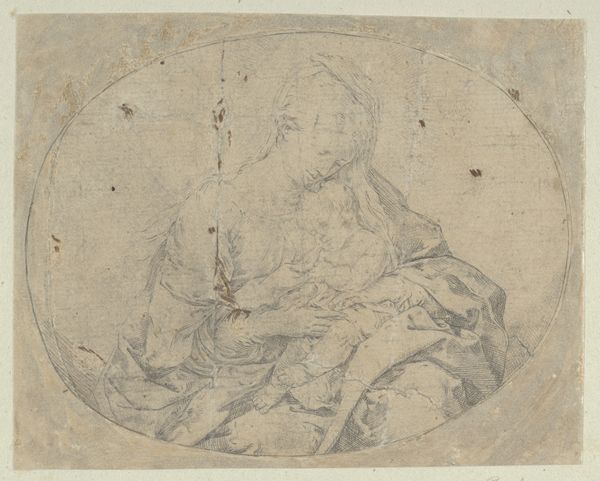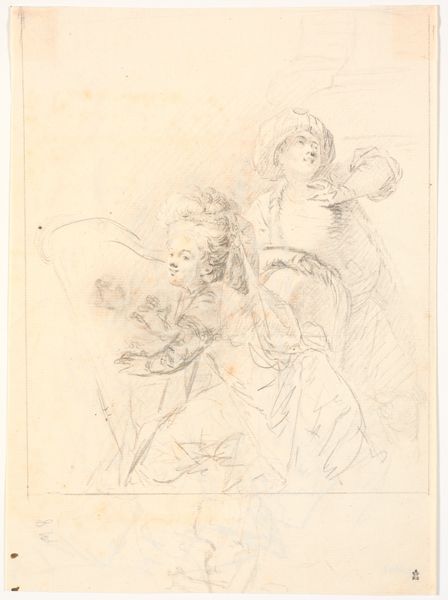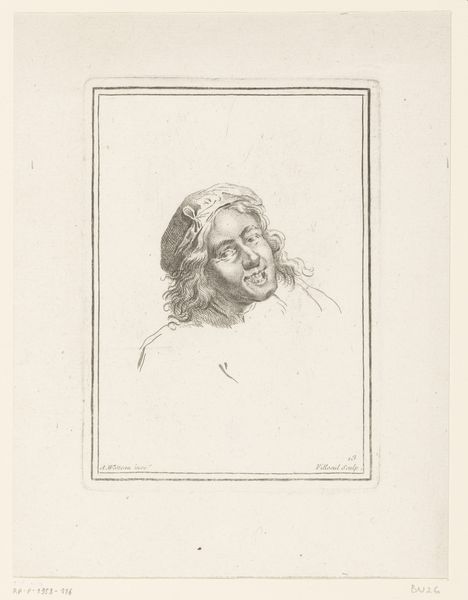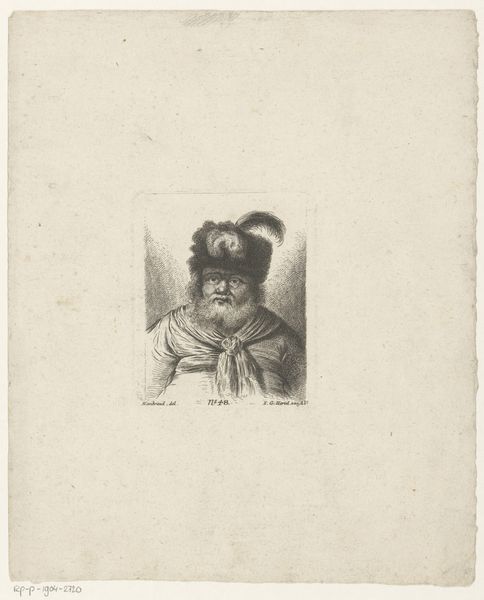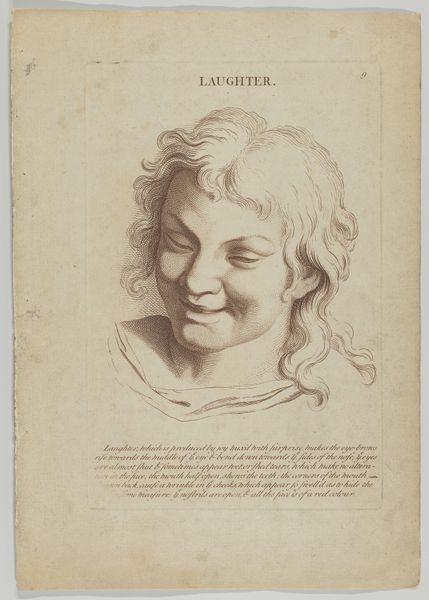
Sheet of studies with the head of Rembrandt, a beggar man, woman and child 1651
0:00
0:00
drawing, print, etching, paper, engraving
#
portrait
#
drawing
#
baroque
#
dutch-golden-age
# print
#
etching
#
figuration
#
paper
#
line
#
engraving
Dimensions: 112 mm (height) x 92 mm (width) (plademaal)
Editor: So, here we have Rembrandt van Rijn’s “Sheet of studies with the head of Rembrandt, a beggar man, woman and child,” made in 1651. It's an etching and engraving on paper. The scratchy lines create an intimate feel, almost like we’re peeking into his sketchbook. What stands out to you? Curator: What I notice is the labor involved in the production of a seemingly informal sheet. Etching, especially in 17th-century Netherlands, was hardly an automated process. We’re seeing Rembrandt grapple not just with artistic skill, but with the very materials and social structures that allowed him to produce these images. Editor: How so? The social structures? Curator: Consider the copper plates he used. Where did that metal come from? Who mined it? Who transported it? And then think about the knowledge required to prepare the plate, apply the ground, and etch the lines with acid. This wasn't work done in isolation. It’s embedded in networks of production and consumption. The printmaking process enables this study to circulate, both as a commodity and as a study source for aspiring artists to mimic the skills on display here. Editor: That's fascinating! I hadn’t really considered all the labor and resource extraction behind a single print. So even this seemingly simple sketch reflects a whole world of material and economic activity? Curator: Precisely. It's about decentering the myth of the lone artistic genius and acknowledging the material conditions that shape art production. We’re not just looking at artistic inspiration; we're witnessing the physical and social relationships required to make this image. It's a tangible record of human effort, shaped by available materials, knowledge, and markets. Editor: That gives me a totally new way to think about the piece – from something spontaneous to something deeply connected to its time and place through its very materiality. Curator: Absolutely! Material analysis brings us closer to understanding art as embedded in a complex web of human activity, extending far beyond the artist's studio.
Comments
No comments
Be the first to comment and join the conversation on the ultimate creative platform.

